Welcome to Forum
Discuss everything about Neighborhood & Identity
Chaplygina A. Epideictic Heritage of Choricius of Gaza
Posted in CategoryContinuity and Transitivity-
SSergey Prokopenko 5 years ago
My scientific interests are based on the study of the personality of Choricius of Gaza and his works.
The rhetorical school in Palestinian Gaza was one of the brightest centers of its kind in the 5th – 6th centuries. After Procopius of Gaza, the school was headed by his student Choricius, the last representative of ancient rhetoric. The hrise of the creative forces of Choricius happened in the second quarter of the 6th century. All of his works belong to the traditional genres of epideitic: ecfrasis, epitaph, encomium, etopeia, monody, panegyric, epithalamus, apology. Works are divided into 3 groups - these are speeches (oratio), educational recitation (dialekseis) and introduction to recitation (lalia).
Speeches were often delivered to a particular real occasion and to some extent reflect historical reality. Recitations and introductions are confined to mythological or antique historical plots and realize educational goals.
Living in a difficult era of a change in the religious paradigm and sivil unrest, Choricius in his speeches gave an answer to social tension, trying to interpret the problems of society.
The works of Choricius are the valuable sources for historical science and art history. They reflected on the religious sphere, the worldview of late Byzantine society. They help to reconstruct a number of preserved architectural monuments, as well as create an idea of local traditions and holidays, which is one of the most important components for a holistic perception of the life of Gazians and an indispensable element in the Byzantine cultural heritage system.
The unicity of the work of Choricius lies in the harmonious synthesis of pagan and Christian tradition. Based on this synthesis, the following conclusion can be drawn: by the 6th century, Christianity confidently strengthened in Gaza. Theological education was relevant, but also those who were not a theologian by profession had an idea of the sense of Christianity. Holidays in honor of the saints remained very popular. Traditionally pagan festivals gradually merged with Christian traditions and remained an integral part of the cultural life of the local population.
The issues I consider are not widely studied in the historical science. One of the largest scholars studying the rhetorical school in Gaza was the famous American historian Glenville Downey. We use also the work of the German scientist R. Forster in translating introductory speeches and recitations. In Russia, heritage of Choricius was studied extremely insufficiently. Today N. N. Bolgov and A. M. Bolgova make a great contribution in the research of the personality and works of Choricius.
Please <a href="/forum/login">login</a> or <a href="/forum/register">register</a> to leave a response.



